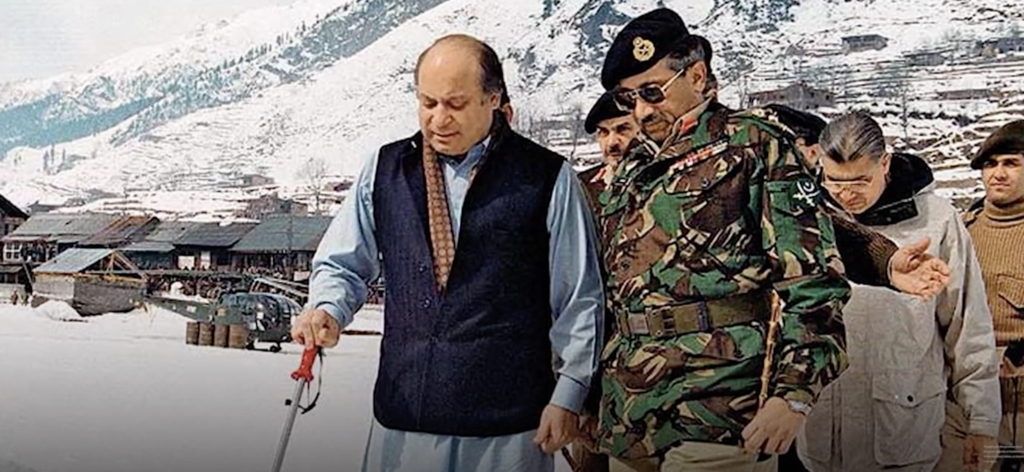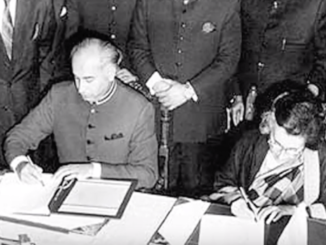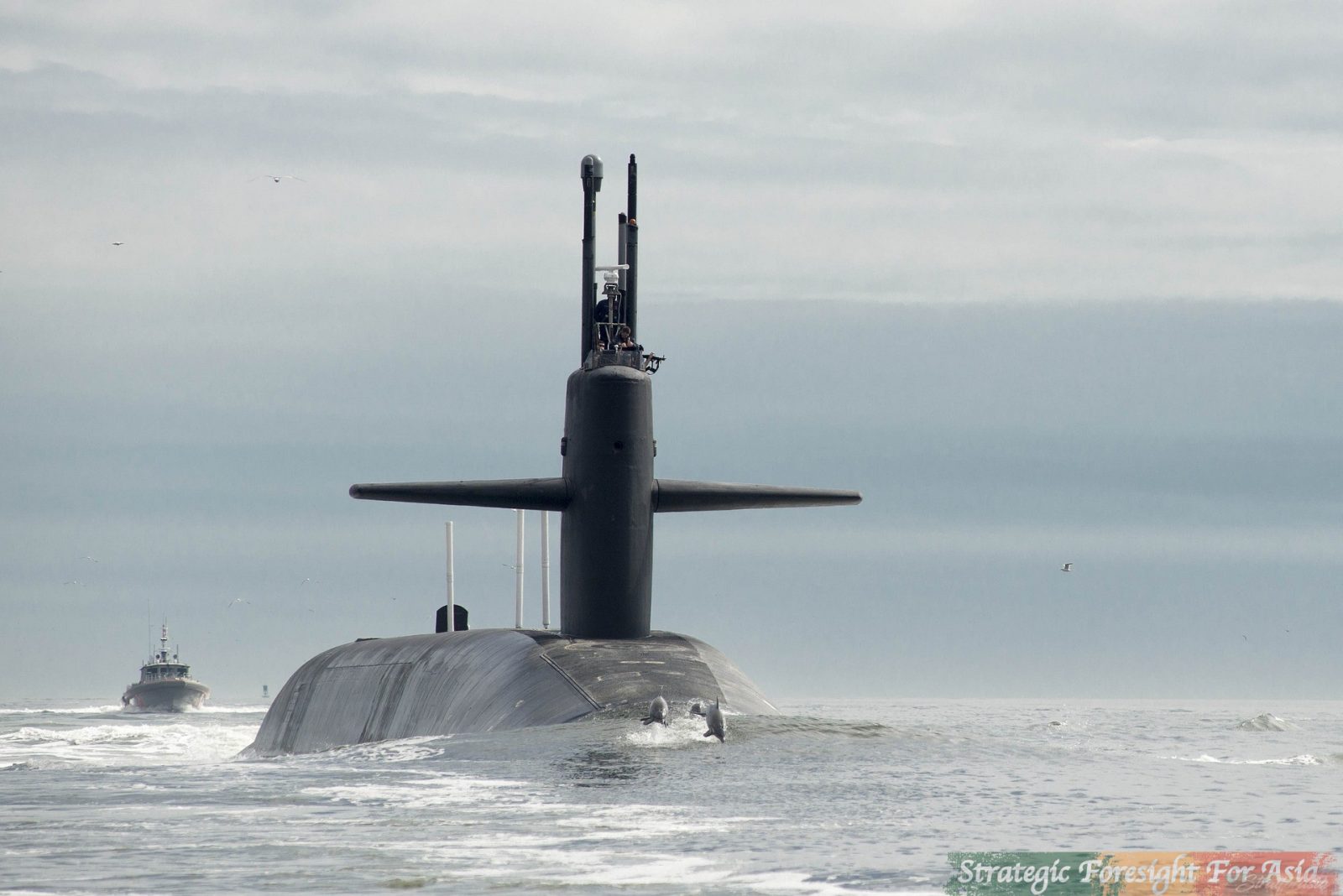
A new nuclear era began by the end of 20th century when India and Pakistan emerged as nuclear armed states. Both states had covertly weaponized the nuclear program years ago, but no overt display of nuclear prowess took place by either side till May 1998. The Indian motives behind testing the nuclear weapons were primarily driven by the political ambitions and electoral commitments of newly formed BJP Government. Under the code name Operation Shakti, India first conducted four successful fission weapon tests on May 11, and then two days later, a partially successful fusion weapon test in Pokhran range. In the aftermath, India began to display very assertive behavior against Pakistan – a state which as per popular Indian assumption was a nuclear bluff.
The intensification of South Asian political atmosphere and a major disturbance in regional strategic balance compelled Pakistan to exercise the similar response. Henceforth, unlike India, Pakistan nuclear testing was a purely security oriented decision. Pakistan tested five underground nuclear tests in Chagai on May 28 – codenamed Chagai I, followed by another test – codenamed Chagai II, on May 30. The psychological impact of nuclear testing instantly altered India’s provocative attitude to a stance of developing regional harmony by building up Confidence Building Measures (CBMs) between New Delhi and Islamabad. A mutual political realization developed on both the sides – as was evident in Lahore accord – that fighting wars was no longer a practical option in South Asia.
In contrast, the military propositions were very different. As per Vipin Narang, the testing of nuclear weapons upgraded the nuclear posture of Pakistan from an ambiguous catalytic posture to a more credible asymmetric escalation posture. Asymmetric escalation posture is an aggressive nuclear posture that involves the assertive employment of nuclear weapons to deter adversary by threatening the first use against both conventional and nuclear aggression. This posture is followed by a state equipped with comparatively less capable conventional prowess and is directed to nullify the deterrent value of adversary’s superior conventional capabilities.
Interestingly, the nuclear tests didn’t alter the retaliatory nuclear posture of India. By nature, asymmetric escalation posture is purposed to deter major conventional escalation, and a retaliatory posture is structured to deter the use of nuclear weapons in the conflict. Therefore, the posture transformation gave Pakistan the incentive to breach India’s conventional deterrence and exercise limited military operation in the Kashmir region. There were two primary assessments by Pakistan military leadership regarding this covert operation. First, a regional conflict in the Kashmir region will highlight the Kashmir issue internationally; and second, India will not be able to escalate the conflict into full scale war due to risks of involvement of nuclear armaments. By 1999, Pakistan had also raised multiple delivery systems in its disposal for carrying nuclear payload to the Indian mainland – a capability which had consolidated the credibility of Pakistan’s nuclear deterrent. Hence, it can be stated that the abrupt change in nuclear posture of Pakistan after nuclear testing led to such strategic calculations that may have triggered Kargil conflict.
In the winter of 1998-1999, Pakistan army initiated operation Koh-e-Paima (Ops KP) in the Kashmir sector. By successfully exploiting the gaps in Indian defense line, Pakistan’s land forces (pre-dominantly comprising of regional paramilitary force called NLI) infiltrated deeply within multiple sectors across the Line of Control (LOC). India discovered the intrusion in early May 1999 and initially attempted to retake the lost territories using ground forces. Unaware of the intrusion scale, the hectic attempts by the Indian military caused disastrous loss of life and failed to achieve any meaningful result. Despite demands from the Indian military, New Delhi refused to allow the opening of new fronts.
This refusal is attributed to the risks of nuclear escalation which Indian political leadership considered as a viable threat. In fact, during an official meeting, when Gen Malik stressed upon the idea of threatening Pakistan with expansion of conflict, Indian Prime Minister Vajpayee refuted his proposal citing the presence of nuclear bombs in Pakistan’s disposal. This proves that the nuclear weapons deeply influenced the decision-making process, both at the military and the political levels, throughout the Kargil conflict and played major role in limiting the conflict.
By May 24, the worsening situation in war theater finally led New Delhi to escalate the conflict, and employ the Indian Air Force (IAF). The IAF deployed fighter aircrafts for both air defense as well as for ground strike missions. Despite having the advantage of unchallenged airspace, early missions by IAF received limited success and it lost two fighter aircrafts (Mig-21 and Mig-27) and a helicopter gunship due to enemy ground fire. These losses compelled the IAF to switch to high end assets like Mig-29 and Mirage-2000 and strike overstretched supply lines of intruding forces, instead of directly engaging the enemy defensive positions.
The beyond visual range (BVR) combat capability of Mig-29 aircraft allowed the IAF to sustain complete air control of the war theater. Similarly, the employment of laser guided bombs (LGBs) from Mirage-2000 aircraft permitted the IAF to strike targets with precision while flying at high altitudes. The blockade of supply routes slowly began to compromise the resistance of intruding forces. This escalation tilted the tactical advantage in favor of the Indian armed forces – an aspect which was not correctly calculated by Pakistan’s military establishment.
Pakistan, on its part, didn’t attempt to match the vertical escalation and maintained a defensive conventional posture till the termination of the conflict. The disagreements between political and military leaderships regarding the scope and feasibility of continuation of the Kargil conflict undermined the prospects of achievement of the perceived war objectives. The diplomatic pressure from Clinton administration on Prime Minister Nawaz Sharif, lack of diplomatic support from international community, and heightening of tensions, compelled Pakistan to withdraw from the occupied territory. Though Kargil conflict came to an end, but it led to permanent environment of distrust between both the nuclear armed neighbors. Kargil conflict was the very first example of direct conventional confrontation between two nuclear armed states testing the limits on both the sides in a tense combat environment, and which had the potential to escalate to the nuclear scale.
Once compared to previous conflicts between the two neighbors, Operation Koh-e-Paima appears a reflection of Operation Gibraltar (1965) which eventually ended into a full-fledged war. In 1965, following Operation Gibraltar and then Operation Grandslam from the Pakistani side, India retaliated and crossed the international border and opened multiple fronts against Pakistan’s mainland. The escalation of a limited conflict into a full-scale war compelled Pakistan to abandon offensive operations in Kashmir and undertake defensive countermeasures against Indian offenses across the international border. A multi-front war was more favorable to the Indian armed forces due to its numerical advantage which ultimately ended up as stalemate.
In contrast, during the Kargil conflict India was unable to exercise expansionist course of military action. Instead, the Indian armed forces escalated the conflict vertically by introducing air force but did not open new fronts or crossed the international border. The major reason for this containment could be attributed to the risk of potential nuclear escalation.
When Kargil conflict is visualized from a nuclear perspective, it illustrates five major lessons. First, a sudden change in nuclear posture could lead to strategic miscalculations that could end up into a military conflict in a volatile region; second, an assertive nuclear posture undermines the credibility of adversary’s conventional deterrence; third, feasibility of fighting a limited conventional conflict between two nuclear armed belligerents do exist – albeit narrowly; fourth, nuclear weapons successfully deter expansion of a limited war; and finally, nuclear weapons – particularly while maintaining a retaliatory posture, cannot credibly deter the start of a limited conflict, and therefore modern conventional forces are required to counter low-spectrum conflicts.
The Kargil conflict significantly altered the threat perceptions of India and Pakistan. Later, the failure of Operation Parakram (2001-02) encouraged India to alter its posture and prepare to fight a swift and limited war, instead of a war of attrition. India eventually abandoned the Sundarji Doctrine and developed a Cold Start Doctrine (CSD). In response, Pakistan also evolved its new doctrine to counter the entire spectrum of conflict, which besides developing other options, involved the lowering of nuclear threshold by employment of tactical nuclear weapons and increment in robustness of conventional forces for effectively thwarting a localized conflict. The lessons of Kargil have not transformed the deterrence pattern in South Asia, but has established new benchmarks for escalation control and minimize the risks of inadvertent escalation of a conventional conflict to a nuclear one.
![]()





I would like to point out that India conducted 3 tests on 11th May including one claimed to be a thermonuclear test and two more low yield tests (which weren’t picked up by any seismic station in the world including the nearest one at Nilore in Pakistan. However, it appears that we are trying to re-write history by stating that India conducted 4 fission tests on 11 May and one partially successful fusion test on 13th. The author seems to be too deeply impressed by Vipin Narang and seems to take whatever Vipin has written as a gospel truth but he should also assiduously try to do the fact checking. My request to the editor of Strafasia is to please exercise greater editorial control and discretion especially when it comes to pieces written on sensitive security issues especially nuclear otherwise it will reflect very poorly on the quality of the content of Strafasia.